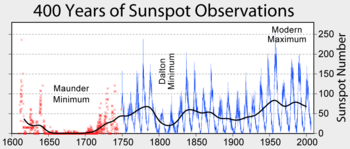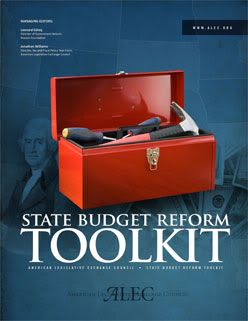Here are snippets from the report:
--==[SNIP]==--
SOLAR CYCLES AND TEMPERATURES
When the sun is more active, it is brighter than when it is quiet. This difference in brightness or irradiance over the 11 year cycle is about 0.1%. The irradiance change though since the little ice age may be as high as 0.4 or 0.5% and has been used to explain the ice age and recovery since. Even on the shorter term, there are other solar factors at play besides simple brightness or irradiance changes.
While irradiance changes just 0.1% over the 11 year cycle, ultraviolet radiation changes 6 to 8% and shorter wavelengths even more. Ultraviolet radiation destroys ozone, an exothermic process which produces warming in the higher atmosphere in low to mid latitudes that works its way down to the middle troposphere in time. Labitzke (2001) has shown statistically significant differences of temperatures in the lower stratosphere into the middle troposphere with the 11 year solar cycle (warmest at max) which she attributes to solar flux induced ultraviolet variance. Shindell et al NASS GISS (1999) showed results from a global climate model including ozone and UV found UV induced stratospheric ozone changes and generated heat that penetrates into the troposphere, in effect confirming Labitzke’s findings.
Also an active sun causes a diffusion of cosmic rays, which have a low cloud enhancement effect through ion mediated nucleation. Low clouds reflect radiation and have a net cooling effect. The absence of them during active solar periods means more radiation reaching the surface. Enhanced low cloudiness during solar minima would augment cooling.
The best forecast in recent years has been by Ken Schatten (AI Solutions) and Sabatino Sofia (Yale). That forecast requires analysis of conditions at solar minimum and since that has not clearly happened yet it is not available. Schatten has another method he has used and is projecting a quieter (SSN maximum of 80 or less) cycle 24.
Clilverd and others in 2007 did a statistical analysis [pdf report] of the various cycles and used their superimposition to correctly hindcast the past cycles. He projects a cycle max of around 40 for the next two cycles, similar to the Dalton Minimum 200 years ago.
A similar finding was made by Archibald who speculates a major cooling ahead that could rival or be worse than the Dalton Minimum. In the hyperlinked paper [pdf report], he even projects the impact on some US locations based on historical trendlines. Such a cooling would of course further call into question the idea that greenhouse gases are behind all the changes in our climate and natural factors are now suddenly unimportant. In our recent stories, we have shown how important ENSO and the multidecadal cycles in the oceans are to temperatures. It is my belief that someday we will find proof that soplar changes drive the ocean cycles which drive the land temperatures.
Source: Intellicast (This Week In Weather)
Commentary
I've warned repeatedly on this blog that we may be headed for a Cold Catastrophe. This flies in the face of the Global Warming Hoaxers, Progressives and Socialists. The globe has been coolling since 1998, and even more is in store in the years ahead. Growing seasons will shorten, fuel supplies will dwindle as the winters lengthen, and people will die because these very same Global Warming people denied the truth of a cooling globe. Perhaps this folly will kill as many people as their failed ideology of Communism did in the 20th Century...when will people learn to do the opposite of what these progressives advocate?































1 comments :
To put the whole Climate Change issue into perspective vis-a-vis the Peak Oil Crisis, everyone needs to ask themselves, their associates, all sitting elected officials and those seeking office, especially the office of President of the United States, "What is more threatening in both the long and short terms, a beneficial 1 degree F rise in average world temperatures over the past 100 years, or a 1 percent decline in world oil production over the last 100 weeks - with steepening declines forecast? Furthermore, can our economy better deal with declining fuel inventories in an environment of persistent warming, or in an environment of declining average temperatures over the next several decades, the most likely scenario given the highly reliable solar inertial motion (SIM) model forecasts of climate change?” Solar cycle # 24 will tell the tale. The problem is not AGW. The real problem is the end of cyclical warming coincident with the onset of Peak Oil.
Post a Comment